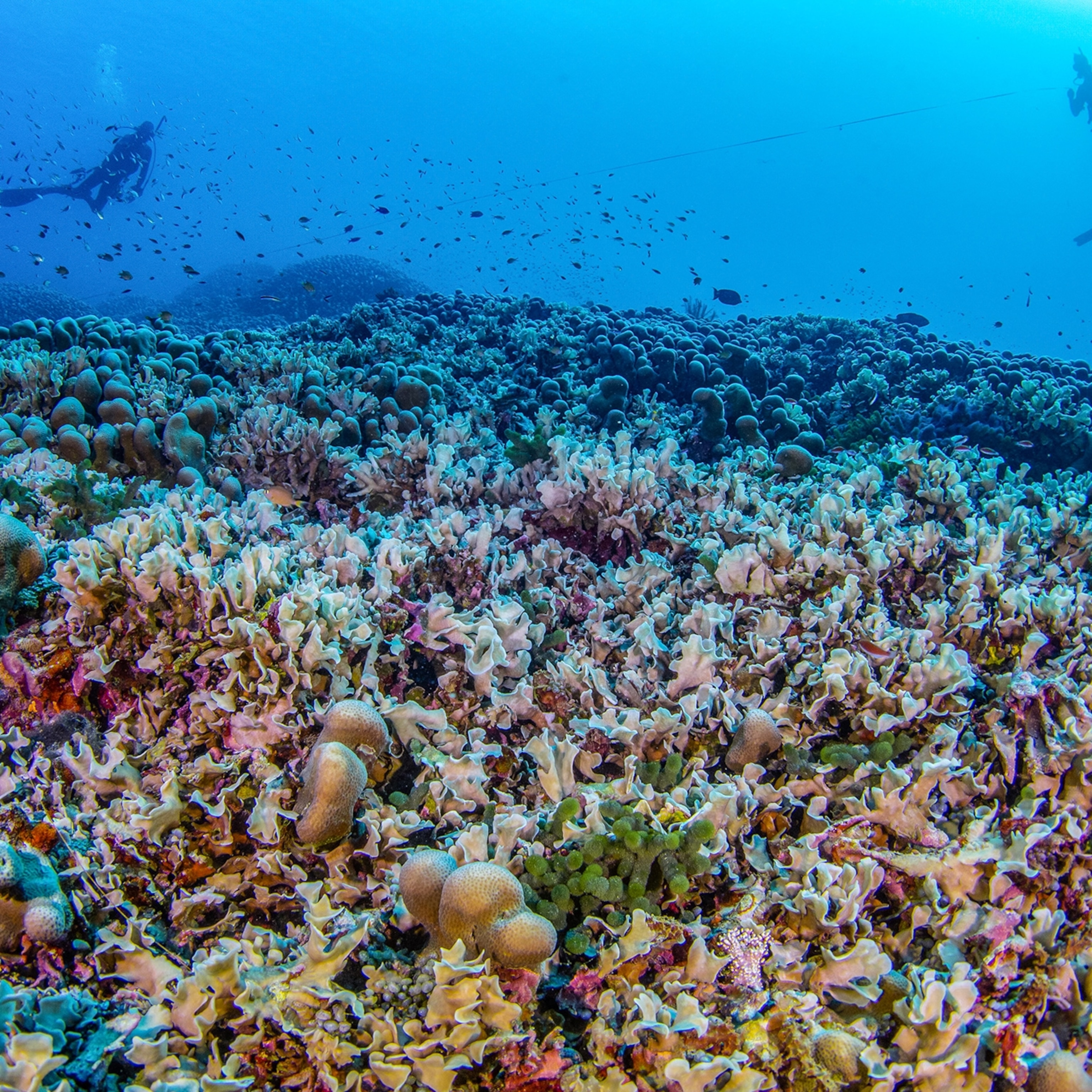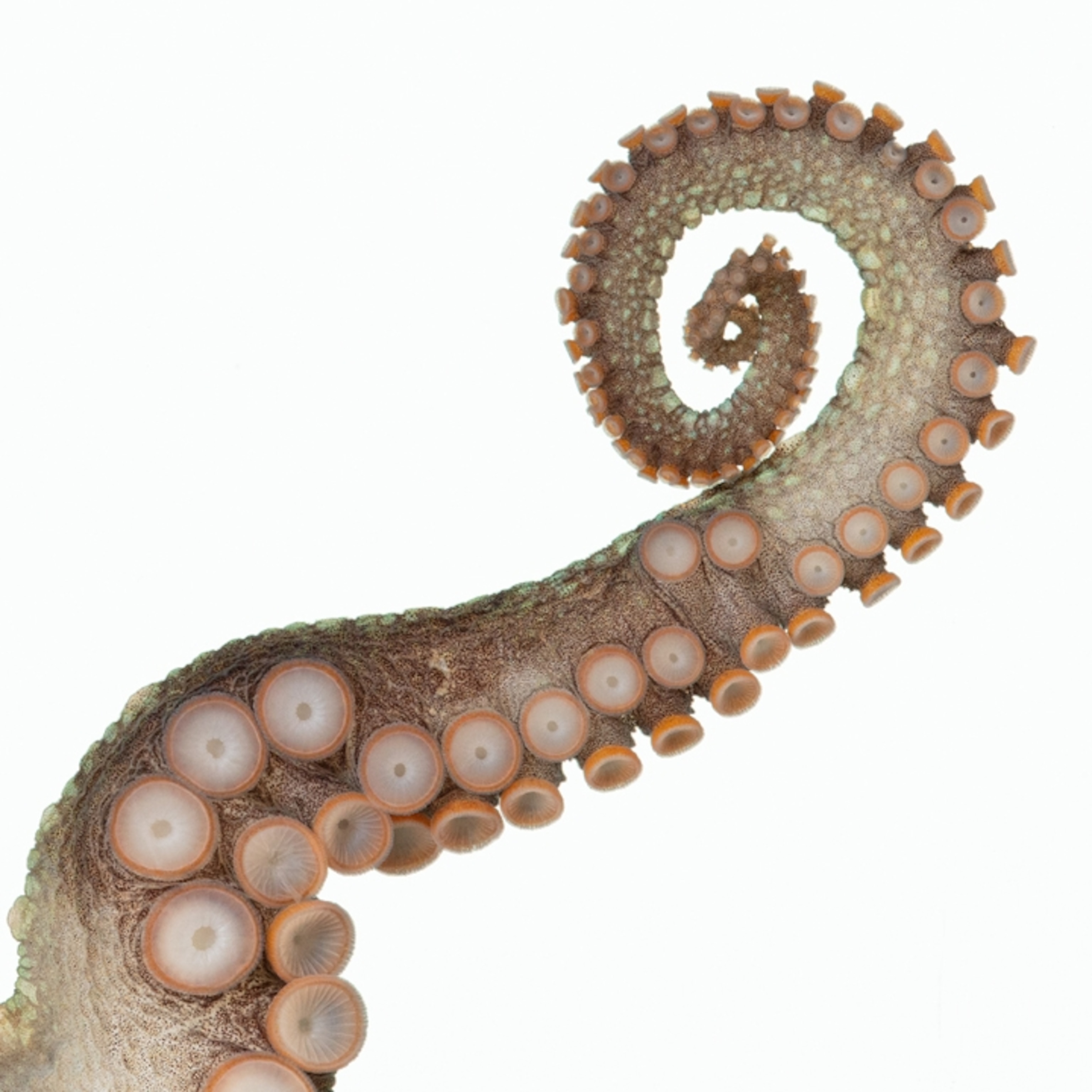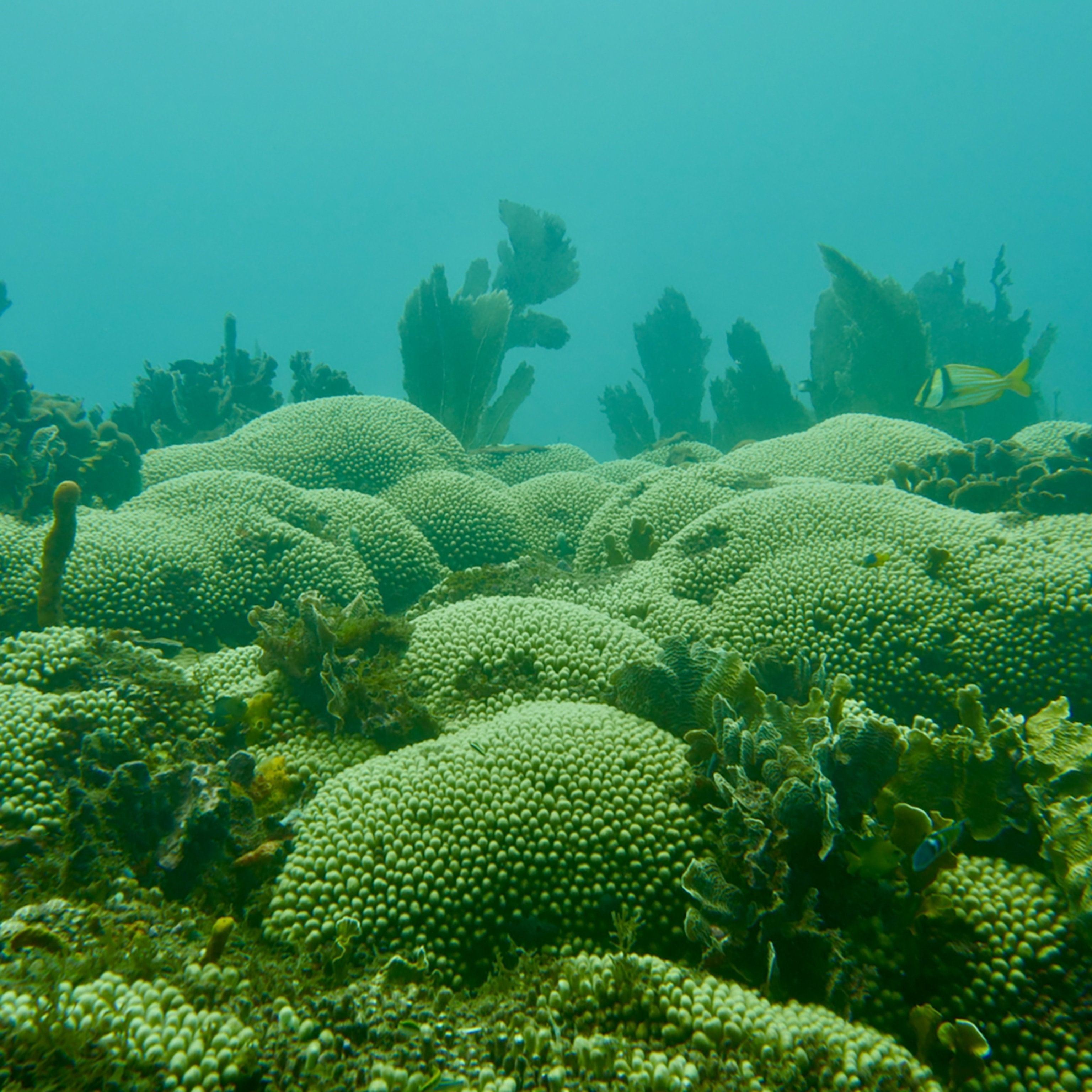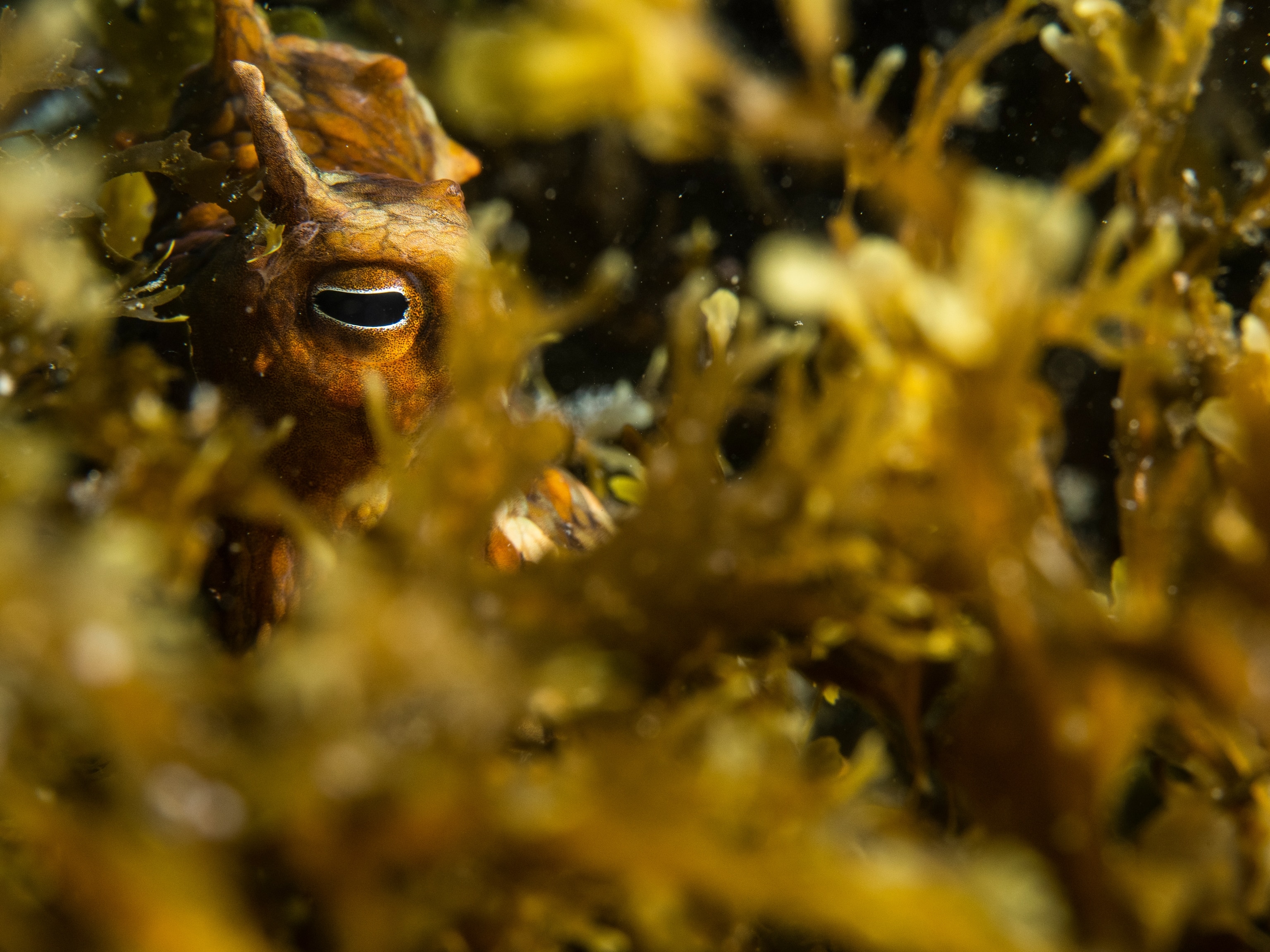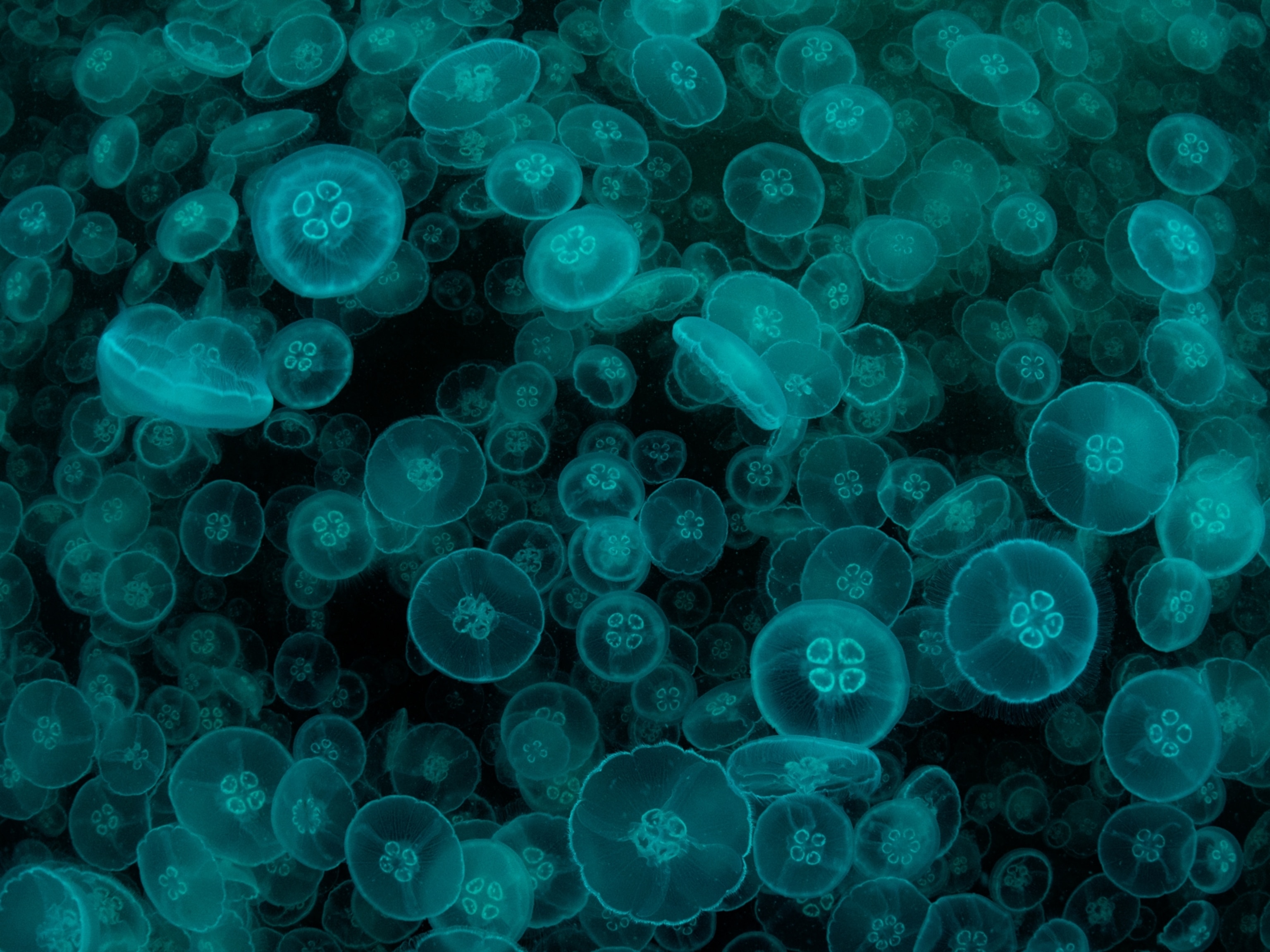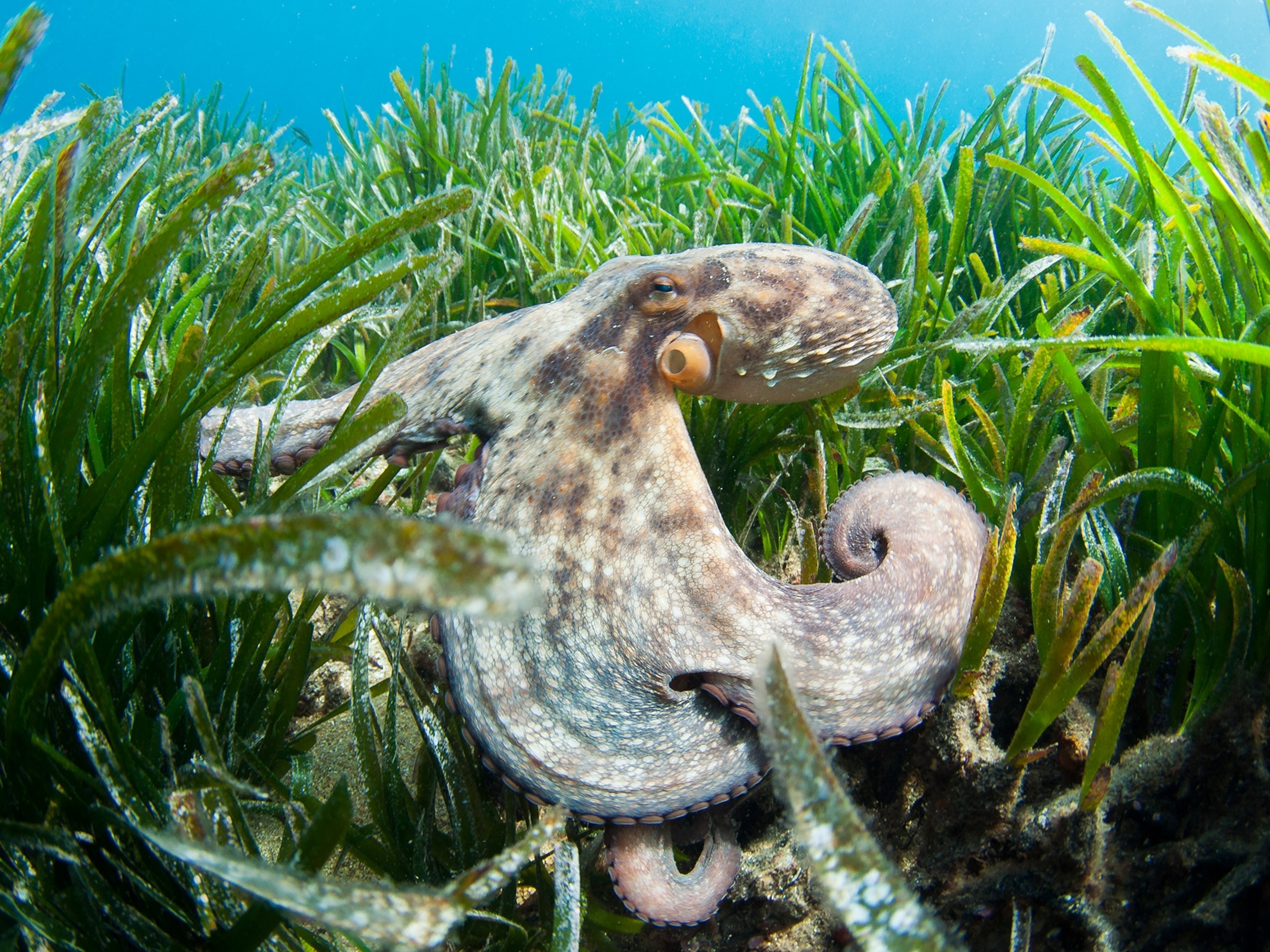
Scientists peeked underneath an iceberg and found a startling kaleidoscope of marine life
A hidden ecosystem of giant sea spiders, octopuses, and other stunning sea creatures shows how life can flourish even when sealed off from the surface by a thick layer of ice.
On January 13, when an iceberg the size of Chicago broke away from Antarctica’s immense George VI Ice Shelf, scientists in a nearby research vessel did something nobody had ever done. They sailed to look at the seafloor that had suddenly been exposed, like lifting the world’s biggest rock to see what critters lay underneath.
Life is almost everywhere in the oceans, from the sunlit-bathed shallows to the pitch-black, sometimes volcanic depths. The research team aboard the Schmidt Ocean Institute’s R/V Falkor (too) ship were confident they’d find animals at their destination. But they were shocked at the explosion of life they discovered—a forest of sponges, giant sea spiders, icefish, octopuses, huge corals, anemones, and ethereal deep-sea jellyfish.
Marine biology is known to be highly adaptive and extremely resilient. “It’s not an absolute surprise that we have life,” says Sasha Montelli, a geophysicist and glaciologist at University College London and expedition team member. But “biologists were really surprised by the richness of it—how colorful, how spectacular it was.”
“That tells us that what we have are thriving, diverse, and well-established ecosystems under the ice shelf,” says Patricia Esquete, a marine ecologist at the University of Aveiro, Portugal and member of the expedition. And that diversity offers scientists a puzzle.
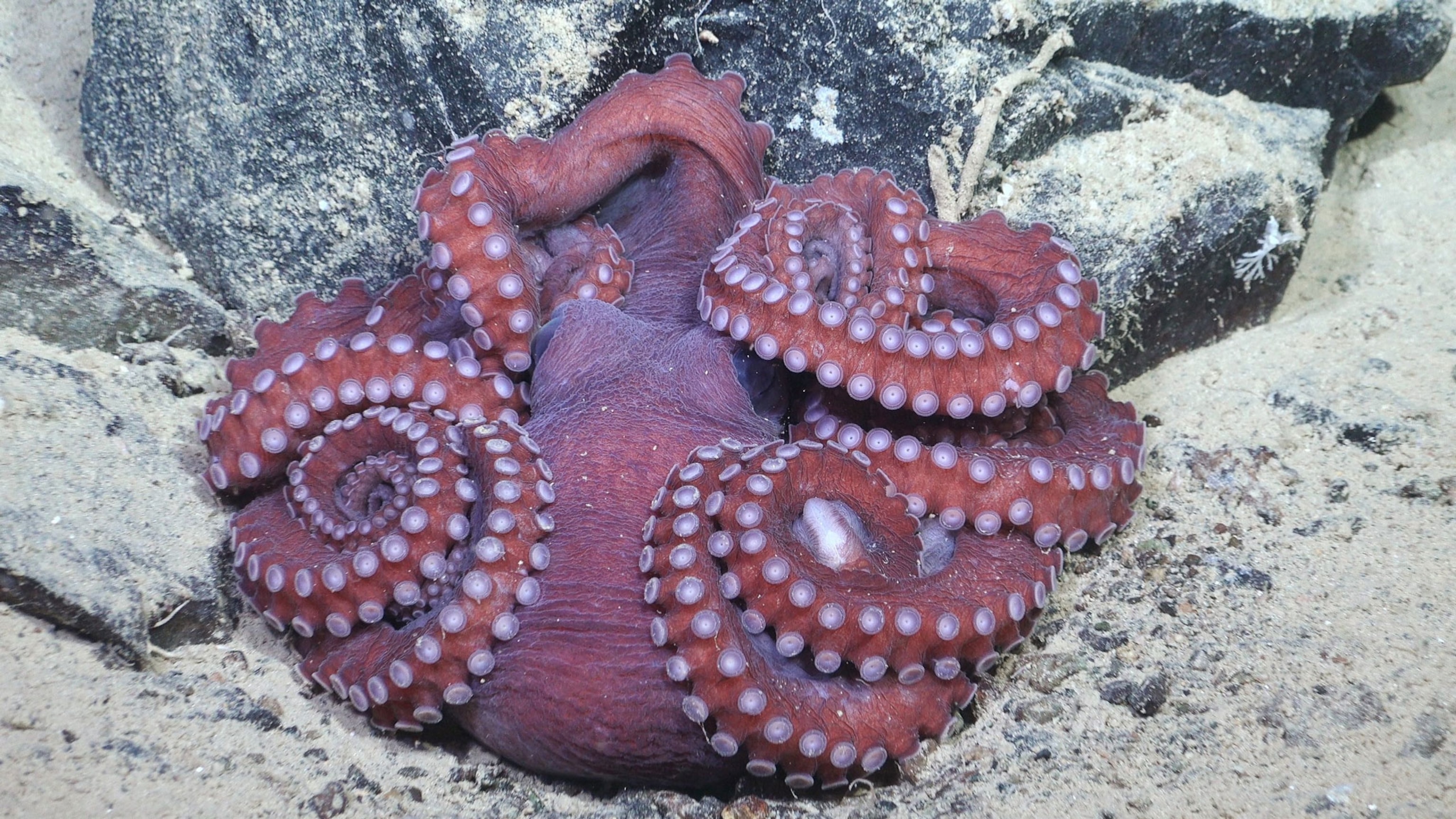
Normally, deep-sea ecosystems get their nutrients from the sea surface, which sprinkle down toward the seafloor. But this area was covered by a 500-foot-thick icy roof for an interminable amount of time, meaning that these critters must be getting their nutrients another way.
“What mechanisms allow these ecosystems to occur and thrive?” says Esquete. The expedition team hopes that the huge volume of oceanic and environmental data taken during from the site will provide some concrete answers—as well as revealing if any of these animals they’ve found are previously unknown to science.
“It’s going to be really exciting to see what they find,” says Jon Copley, a deep-sea ecologist at the University of Southampton who was not involved with the expedition.
A Chicago-sized surprise
R/V Falkor (too) has travelled across the world in the hope of solving all kinds of marine mysteries. And in January, it just so happened to be exploring the frigid waters around Antarctica. Ecologists were seeking out curious forms of life, while physical oceanographers and geoscientists were studying the Southern Ocean, a major sink for carbon dioxide emissions.
While sailing in the Bellingshausen Sea they looked at their satellite imagery of the area, which is updated on a near-daily basis. “We saw that right next door, there was this huge iceberg calving,” says Montelli. A-84, as the iceberg was later dubbed, broke away from the Antarctic Peninsula, before quickly drifting away.
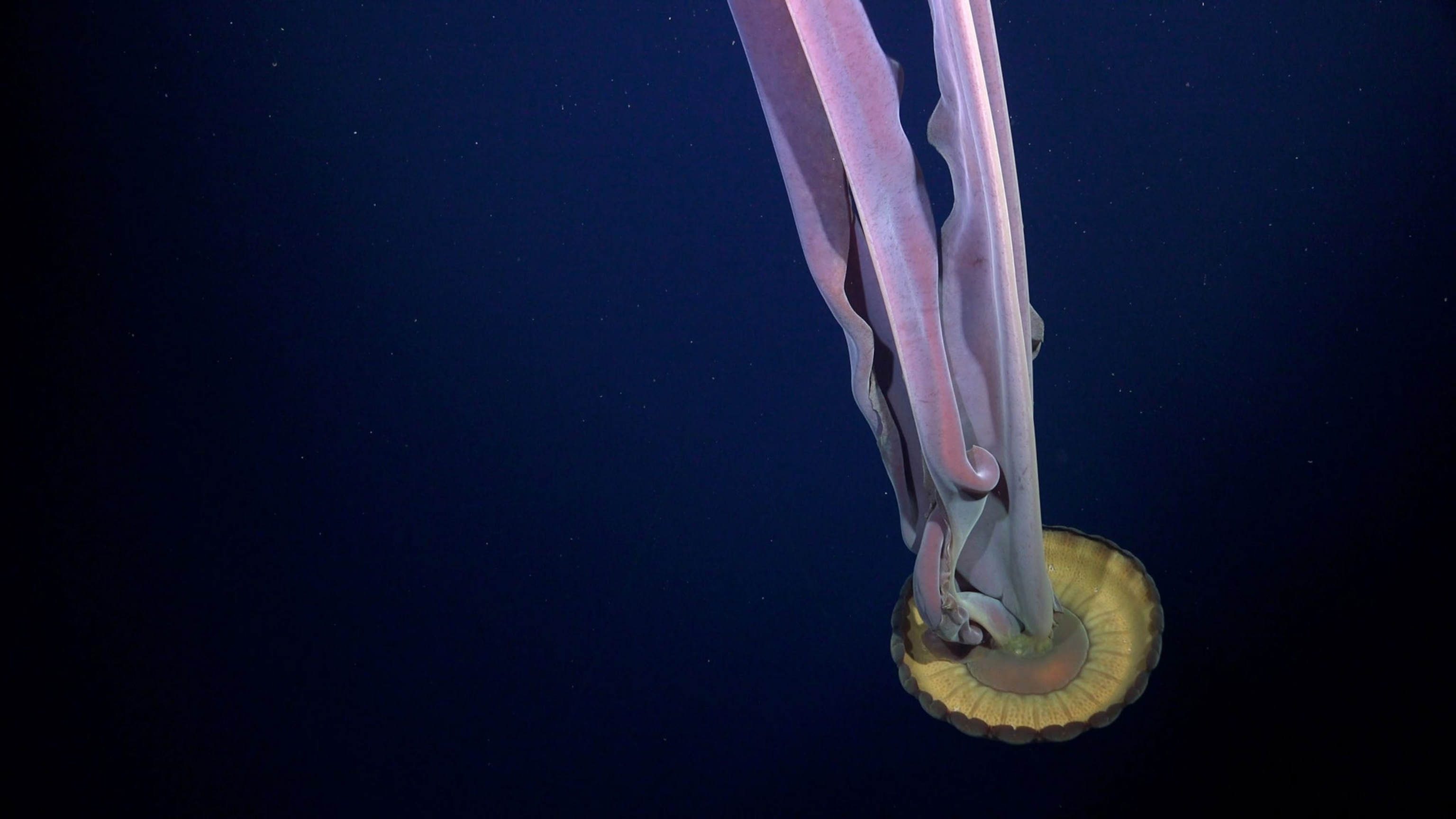
Ice shelves, and their underbellies, are notoriously difficult to study. Conveniently, A-84 unveiled a 209-square-mile patch of seafloor for all to see.
“We decided right away to change the sampling plan and head to the area that was recently covered by ice,” says Laura Cimoli, a physical oceanographer at the University of Cambridge who led the oceanographic effort on the expedition.
When the ship arrived, they wasted no time in deploying their surveillance tech, from their remotely operated submersible, SuBastian, to autonomous robots that gathered information about the properties of the water column.
Immediately, it was clear that there was considerably more life there than anyone anticipated. “There were many species, occupying a variety of ecological niches and with a variety of functional traits,” says Esquete.
To determine how long the ecosystem had existed, they turned to sea sponges. These animals often grow very slowly, around just an inch or so per year. But the sponges in this abyss were so large that they must have been growing there for many decades or even centuries.
Fed by underwater rivers
The discovery of this life isn’t surprising in isolation.
“Many animals thrive in dark, cold-water habitats, so it makes sense that this community was established under the shelf, which not only concealed the community, but also provided it with protection from surface activities and exploitation,” says Danielle DeLeo, a deep-sea biologist at Florida International University who was not involved with the expedition.
But it’s odd to see such a plurality of different lifeforms in what was, until very recently, a confined environment. In fact, “it looks similar to the seabed life that we get in Antarctica that aren’t covered by ice,” says Copley—but how is this possible?
In shallow waters bathed in sunlight, phytoplankton algae thrive. At night, they are feasted on by small crustaceans named krill. When they’re satiated, the krill sink far below the waves and bring nutrients to the seafloor with them—including via their poop, which fertilizes and feeds the denizens of the depths.

That doesn’t really happen when you have a ginormous ice cap suspended above the seafloor. This would prevent phytoplankton blooms, which would in turn stop the downward precipitation of nutrients.
“We expected that, given these ecosystems could not be fed by photosynthesis happening on the surface, the ecosystem would be more impoverished and less established,” says Esquete.
The rich ecosystem they found suggests that “any food that came in would have been carried on currents, slipping in underneath the ice shelf,” says Copley. That tracks, as oceanographers have mapped out submarine rivers flowing both to and from this part of Antarctica.
“The fact that we found long-living species suggests that indeed the lateral transport, which mostly consists of glacial meltwater from George VI ice shelf, could be the source of the nutrients sustaining the thriving life found under the newly exposed ice shelf,” says Cimoli.
With so many biological, geological and chemical samples yet to be processed, many questions remain. Esquete wonders how the ecosystem will develop now that their icy roof has vanished.
Cimoli is curious about how the iceberg’s formation has churned up the upper ocean and introduced turbulence to its distinct layers. She also wonders how this iceberg’s liberation has affected the region’s oceanic circulation.
Ecologists, meanwhile, are grappling with just how quickly their knowledge of the Antarctic depths has evolved.
Thanks to A-84, they now have “a glimpse as to how far the very rich seabed life we have around Antarctica extends beneath the floating ice shelf,” says Copley.

